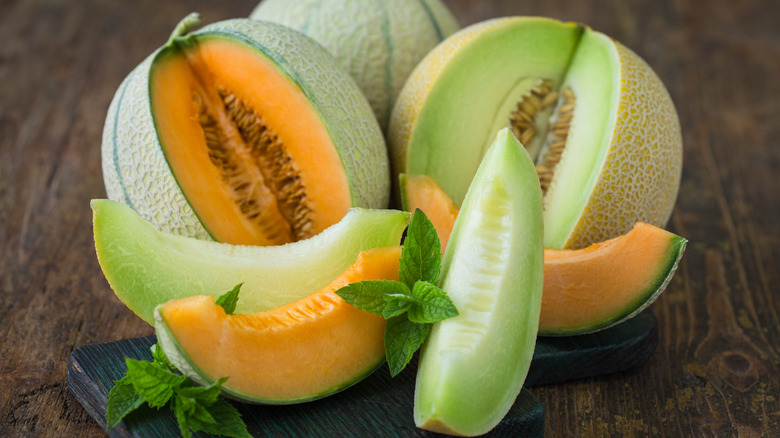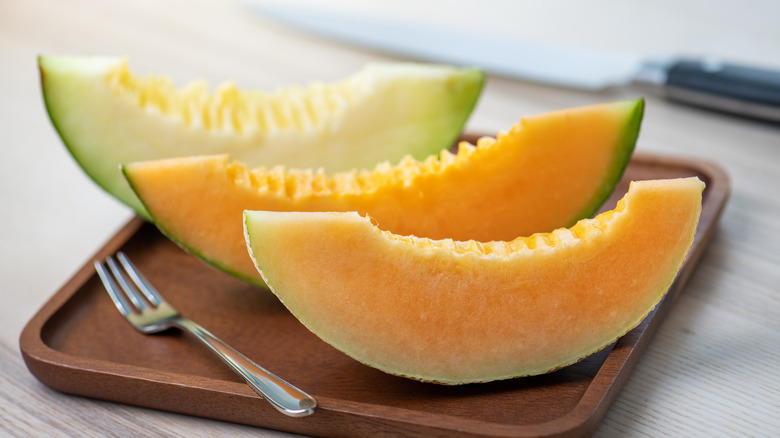The Difference Between Orange And Green Honeydew Melons
If you ask Kermit the Frog, it's not easy being green. However, if you happen to be a honeydew melon, green is where it's at. A trip to your local grocery store is likely to present you with a classic green honeydew melon. Maybe they're already a staple in your go-to fruit salad for outdoor entertaining. You might even be grilling honeydew to garnish your cocktails. (If not, you can thank us for the idea later.)
Not only are they a delicious seasonal delicacy, honeydews are also packed with an impressive array of health benefits. Honeydews are rich in plant polyphenols, unique natural compounds that promote antioxidants and anti-inflammation, per Healthline. According to the outlet, honeydew melons are also a good source of superoxide dismutase, a powerful organic substance that helps protect the skin from the sun and helps the skin repair itself from sun damage — an especially useful benefit during the summer months.
But, from cantaloupe to watermelon to Crenshaw, there are a massive amount of melon varieties in the fruit world, and honeydew is no exception. According to Specialty Produce, green isn't even the only type of honeydew out there. It's time to pull back the curtain on the lesser-known, harder-to-find melon phenom. Introducing: orange-fleshed honeydew.
Orange you glad it's time to dig in?
Orange-fleshed and green-fleshed are the two main types of honeydew melons you're likely to find in your local supermarket, per Specialty Produce. The rarer orange-fleshed melon is a cross between green honeydew and muskmelon, which lends traits from both varieties, especially a strong fruity fragrance, crisp mouthfeel, and smooth skin.
How's the taste? While looks can be deceiving, look with your taste buds — not your eyes. According to grocery giant Whole Foods, orange-fleshed honeydews look like their green counterparts on the outside, but resemble cantaloupes on the inside with sweet, fragrant, firm, orange flesh. By contrast, green-fleshed honeydews are still sweet to the palate, but without the stronger aromatic qualities of muskmelon.
Nature's Produce, meanwhile, says orange-fleshed honeydew continues to ripen after being picked, a trait not commonly present in many other melon varieties. Luckily, in addition to the self-preservative qualities of its skin, there's an easy way to determine its freshness before slicing in. Once the melon's outer skin becomes pale yellow to greenish in color, it's a good indicator that the flesh inside is ripe and ready to eat.

